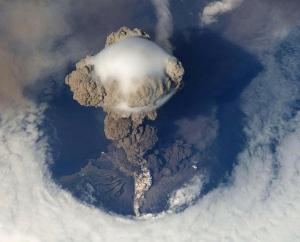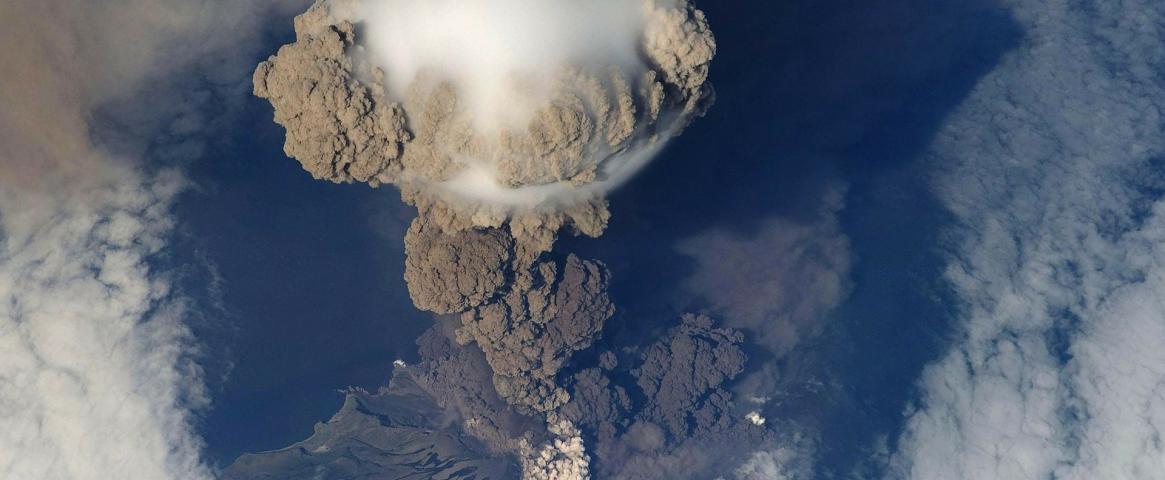By Zack Savitsky

The heat driving Earth’s fever comes from one place: the sun. A growing research community believes we could buy time by temporarily dimming the sun’s relentless flow of energy onto the planet — an approach called solar geoengineering. Eleven countries, not including the U.S., proposed in March 2019 that the U.N. Environment Assembly expand research in geoengineering, including projects to manage sunlight. But the technological challenges and potential side effects are daunting, and global cooperation remains a major impediment, as highlighted in a contentious Feb. 16 session at the American Association for the Advancement of Science (AAAS) annual meeting.
Catastrophic weather trends and record-high temperatures have sparked a sense of urgency to tackle the consequences of climate change from greenhouse gases that trap heat in the atmosphere, the panelists noted.
“We’re really running out of time on this,” said John Moore, a climate change scientist at the University of Lapland in Finland and Beijing Normal University in China.
Manipulating the environment to mitigate climate risks, broadly known as geoengineering, is no longer viewed as radical. Societies have geoengineered their habitats in other ways for centuries. For example, ancient Chinese farmers controlled annual river floods with dams and canals.
Solar geoengineering is far more elaborate. In the last 50 years, scientists have proposed many ways to do it, including brightening marine clouds and placing a thin sunshield in space. The most widely discussed process involves spraying millions of tons of reflective liquid droplets called aerosols into the stratosphere, Earth's upper atmosphere. This high, hazy veil would reflect some of the sun’s radiation back into space and effectively cool the planet.
Massive volcanic eruptions do this naturally. The June 1991 eruption of Mount Pinatubo in the Philippines injected nearly 20 million tons of sulfur dioxide and ash into the stratosphere, cooling Earth's surface by about 1°F (0.5°C) for two years.
To mimic this effect, researchers have envisioned sending a fleet of 100 aircraft on 600,000 flights over five years, spraying 1.5 million tons of sulfuric acid aerosols into the atmosphere. The droplets would shield around 1 percent of the sun’s light, said David Keith, an applied physicist at Harvard University and director of Harvard’s Solar Geoengineering Research Program.
One percent may not sound significant. But even that slight dimming, Keith noted, could slow the pace of change in regional precipitation and cyclone intensity, as well as temperature and sea level rise.
“What we’ve learned recently makes it look more useful than we thought,” Keith said during the session.
But not all panelists shared his sentiment.
Gernot Klepper of the Kiel Institute for the World Economy in Germany discussed his nation’s more critical stance on the practicality and unknown side effects of solar geoengineering. “Both in terms of affordability and effectiveness, the more we know, the less promising the results are,” he said.
Speakers did agree on the most vexing issue: Solar geoengineering cannot be done locally. Because winds would carry the high-flying aerosols along longitudinal lines and across national boundaries, any large-scale environmental manipulation project would require international consensus, Klepper said.
“Doing anything unilaterally would be utterly disturbing to an already really threatened international architecture of political cooperation,” he said. “And at present, you’ve got a lot of useless people running a lot of the big countries of the world.”
One message from the panelists was clear and consistent: Solar geoengineering would be a palliative treatment — not a cure — for Earth’s heat spells.
Improving the health of the planet requires reducing carbon dioxide emissions significantly and quickly, they said. Without such cuts, geoengineering would prove useless, the speakers stressed during a vigorous audience discussion.
But in combination with greenhouse gas reductions, solar geoengineering could delay the effects of climate change enough to buy more time for nations to decarbonize the atmosphere in other ways, such as planting forests or burying carbon dioxide underground.
The global uncertainty about the logistics and feasibility of solar geoengineering means such efforts remain 10 to 20 years in our future, the panelists agreed.
“It would be ridiculous to talk about actually doing any of this now,” Keith said in a topical lecture. “But there’s a very strong case for having a much larger research effort — a research effort that really needs to be worldwide.”
Zack Savitsky is a junior at the University of Florida studying public relations, physics and Spanish. He founded the Science Communigators club, which creates and aggregates science communication opportunities on campus. He covers research for UF News, coaches science TEDx speakers and copy edits academic manuscripts. Reach him at zsavitsky@gmail.com, and view his work at www.zsavitsky.wixsite.com/scicomm.


